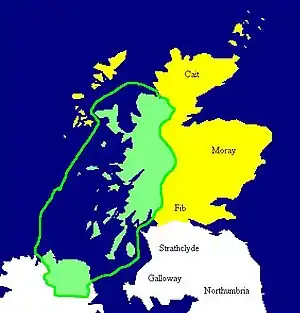736
Year 736 (DCCXXXVI) was a leap year starting on Sunday (link will display the full calendar) of the Julian calendar. The denomination 736 for this year has been used since the early medieval period, when the Anno Domini calendar era became the prevalent method in Europe for naming years.
| Millennium: | 1st millennium |
|---|---|
| Centuries: | |
| Decades: | |
| Years: |
| 736 by topic |
|---|
| Leaders |
|
| Categories |
|
| Gregorian calendar | 736 DCCXXXVI |
| Ab urbe condita | 1489 |
| Armenian calendar | 185 ԹՎ ՃՁԵ |
| Assyrian calendar | 5486 |
| Balinese saka calendar | 657–658 |
| Bengali calendar | 143 |
| Berber calendar | 1686 |
| Buddhist calendar | 1280 |
| Burmese calendar | 98 |
| Byzantine calendar | 6244–6245 |
| Chinese calendar | 乙亥年 (Wood Pig) 3432 or 3372 — to — 丙子年 (Fire Rat) 3433 or 3373 |
| Coptic calendar | 452–453 |
| Discordian calendar | 1902 |
| Ethiopian calendar | 728–729 |
| Hebrew calendar | 4496–4497 |
| Hindu calendars | |
| - Vikram Samvat | 792–793 |
| - Shaka Samvat | 657–658 |
| - Kali Yuga | 3836–3837 |
| Holocene calendar | 10736 |
| Iranian calendar | 114–115 |
| Islamic calendar | 117–118 |
| Japanese calendar | Tenpyō 8 (天平8年) |
| Javanese calendar | 629–630 |
| Julian calendar | 736 DCCXXXVI |
| Korean calendar | 3069 |
| Minguo calendar | 1176 before ROC 民前1176年 |
| Nanakshahi calendar | −732 |
| Seleucid era | 1047/1048 AG |
| Thai solar calendar | 1278–1279 |
| Tibetan calendar | 阴木猪年 (female Wood-Pig) 862 or 481 or −291 — to — 阳火鼠年 (male Fire-Rat) 863 or 482 or −290 |
Events
Europe
- Charles Martel, Merovingian mayor of the palace, forms local alliances with the Burgundians, and imposes Frankish domination on Provence. He defeats Muslim forces at Sernhac and Beaucaire in Septimania (Southern France).[1]
- Battle of Nîmes: The Franks under Charles Martel fail to capture Narbonne but devastate most of the other settlements, including Nîmes, Agde, Béziers and Maguelonne, which Martel views as potential strongholds of the Umayyads.[2]
Britain
- King Æthelbald of Mercia is described in the Ismere Diploma as ruler (bretwalda) of the Mercians, and all the provinces in southern England. He is also named "Rex Britanniae" (king of Britain).[3][4]
- King Óengus I of the Picts invades the neighbouring kingdom of Dál Riata, which is subjugated. He takes the fortress of Dunadd,[5] and establishes his rule in Scotland for over two decades.
Asia
Central America
- June 15 – Uaxaclajuun Ub'aah K'awiil ("Eighteen Rabbit"), ruler of the Mayan city state of Copán in Honduras is defeated in battle by Kʼakʼ Tiliw Chan Yopaat, the ruler of Quiriguá (in Guatemala), and is beheaded. K'ak' ("Smoke Monkey") rules until his death in 749.
- A diplomatic team from Calakmul, led by Wamaw K'awiil, meets with Quiriguá leader K’ak Tiliw Chan Yopaa, in an attempt to negotiate an end to the city's rebellion during the Third Tikal-Calakmul War.
- The Mayan city state of Tikal defeats Calakmul in what is now Guatemala, ending a centuries-long rivalry, but ushering in another century of warfare that ultimately leads to both cities' abandonment in the 9th century.
- Yik'in Chan K'awiil, ruler (ajaw) of the leading Maya city state of Tikal (modern-day Guatemala), conquers rival Calakmul, within the northern Petén region of the Yucatán region (Southern Mexico).
Births
- Hun Jian, Chinese general
- Zhao Jing, Chinese official
Deaths
References
- David Nicolle (2008). Poitiers AD 732, Charles Martel turns the Islamic tide (p. 19). ISBN 978-184603-230-1
- Riche, Pierre (1993). The Carolingians: A Family Who Forged Europe. University of Pennsylvania Press, p. 45. ISBN 0-8122-1342-4
- "Anglo-Saxons.net: S 89". Retrieved April 27, 2007.
- Fletcher, Who's Who, pp. 98–100
- Lynch, Michael (ed.). The Oxford companion to Scottish history. Oxford University Press. p. 180. ISBN 9780199693054.
This article is issued from Wikipedia. The text is licensed under Creative Commons - Attribution - Sharealike. Additional terms may apply for the media files.
